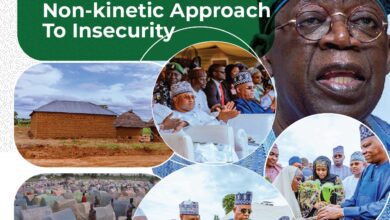OPINION: ITU And Worries Of Widening Digital Dividends

With a third of global population still on the outskirts of digital dividends,in 46 countries,the International Telecommunications Union (ITU) in pursuit of inclusive development says,it is determined to bridge this divide by 2026.
India and China top the countries with the unconnected population with 705 million and 358 million respectively of the global 2.7billion unconnected population.
A conference on digital futures is being planned by the International Telecommunications Union (ITU) that is expected to be attended by regulators and country representatives and holds between June 6 and 8,2023 at the Sharm el-Sheikh, Egypt: Tonino Lamborghini Convention Centre to deliberate on this very critical subject “ bridging the digital divide “.
The Global Symposium for Regulators will be attended by the global regulatory community, policy-makers, industry bodies, academia, the private sector and ITU elected officials.
Though the globe’s 46 least developed countries are home to almost one-third of the world’s offline population, the Internet is considered to be affordable in only two of those countries.
According to ITU data, 2.7 billion people worldwide were offline in 2022. The digital connectivity divide separating the least developed countries from the rest of the world is widening on key factors such as access, digital skills and affordability.
The United Nations defines LDCs as countries that have low levels of income and face severe structural impediments to sustainable development. The call for resources, which comes as the UN strives to rescue its Sustainable Development Goals (SDGs) by 2030, stresses the need for the globe’s digital transformation to be environmentally friendly.
“The digital revolution is a defining force of our era,” said United Nations Secretary-General António Guterres. “As the Internet becomes ever more central to value creation and innovation, least developed countries risk falling further behind. We must dramatically improve accessibility and inclusivity and eliminate the digital divide.”
The ITU has sent a worldwide appeal calling to increase the value of pledges for digitalizing the world from the current USD 30 billion to USD 100 billion by 2026.
The appeal by the United Nations specialized agency for information and communication technologies includes a focus on raising the level of resources for universal and meaningful connectivity and digital transformation in the world’s least developed countries (LDCs).
The announcement of the target was made on World Telecommunication and Information Society Day, observed yearly on May 17 to mark the signing of the first International Telegraph Convention and ITU’s founding in 1865.
“Tech is at the top of the global agenda, but the benefits of digital technology are still out of reach for too many people,” said ITU Secretary-General Doreen Bogdan-Martin. “If we are serious about digitalizing the world in a way that is meaningful and sustainable, we must take action to accelerate digital transformation for everyone.”
In 2023, ITU’s anniversary is focused on empowering the least developed countries through information and communication technologies using the Partner2Connect Digital Coalition and its online pledging platform.
The ITU appeal to the public and private sectors encompasses a campaign launched in February 2022 by Partner2Connect to mobilize direct funding or other contributions for connectivity projects in countries registering the lowest on development. Of the USD 30 billion already pledged overall, Partner2Connect has identified commitments worth USD 12 billion to bring the LDCs online as quickly as possible.
As at April 2023, the country with the largest offline population worldwide was India. The South Asian country had over 705 million people without internet connection. China ranked second, with around 358 million people not connected to the internet.
Despite these large shares of the disconnected population in these countries, China and India ranked first and second, respectively, as countries with the highest number of internet users worldwide.
The other countries with offline population include:
Pakistan (151.52m),
Bangladesh (105.38m),
Ethiopia (104.74m),
and Nigeria ,99.31m.
Indonesia has 92.84m,
Democratic Republic of Congo (87.2m),
Tanzania (45.77m ) and
Kenya 36.75m.
The digital connectivity divide separating the globe’s least developed countries (LDCs) from the world as a whole shows no sign of narrowing. In fact, it is widening on key factors, according to ITU’s Facts and Figures: Focus on Least Developed Countries.
While the share of the population in LDCs using the Internet has increased since 2011 from four per cent to 36 per cent, about two-thirds of the LDC population remains offline. LDCs also still face numerous barriers to meaningful connectivity, including lack of infrastructure, affordability, and skills.
Although no single figure can capture all aspects and complexities of the digital divide, the gap between LDCs and the world in the share of people using the Internet has actually increased from 27 percentage points in 2011 to 30 percentage points in 2022.
“The path to prosperity for the world’s least developed countries runs through digital development,” said ITU Secretary-General Bogdan-Martin. “This special edition of ITU’s Facts and Figures highlights the challenges confronting LDCs and should help strengthen commitments between the least developed countries and their development partners.”






